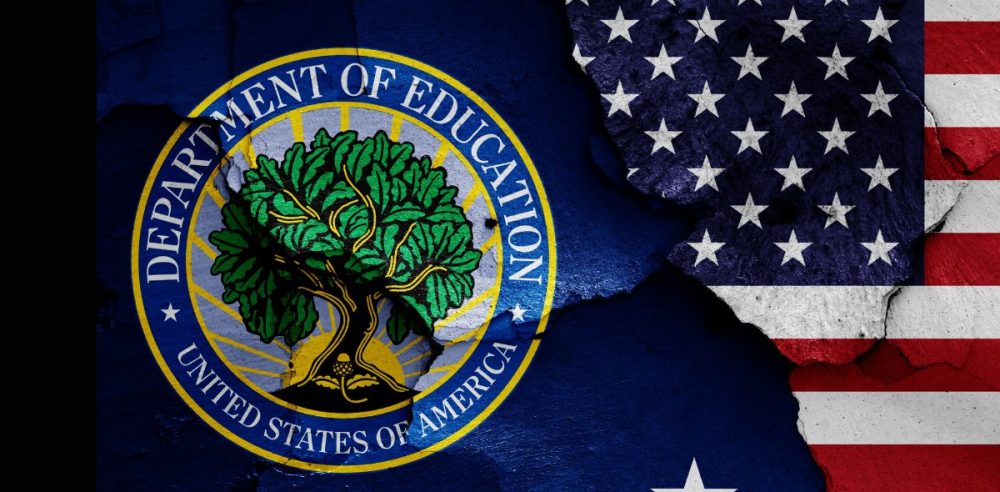Department of Government Efficiency Chief Elon Musk seemingly announced via X the largest closure of a peacetime government agency in American history.
“What is this “Department of Education” you keep talking about? I just checked and it doesn’t exist,” Musk responded to Congressman Maxwell Frost (D-FL) on February 7.
Frost had just posted a video of himself and Congresswoman Maxine Waters (D-CA) being denied access to the Department of Education (ED) building in Washington, D.C.
What is this “Department of Education” you keep talking about?
I just checked and it doesn’t exist.
— Elon Musk (@elonmusk) February 8, 2025
Frost followed up later, writing, “The doors were locked and there were armed federal officers there.”
It is unclear what Musk meant by this message, and he did not clarify it over the weekend. If taken literally, an action of this scale would be unprecedented. Civil governmental bureaus and services are periodically closed as their functions become obsolete, or an administration’s priorities change.
For example, the Bureau of Arms Control closed in 2005, and the Agricultural Stabilization and Conservation Service closed in 1994, but in both cases, each agency was replaced by a succeeding institution with a related mission.
Sometimes cabinet-level agencies are subdivided for various reasons. The Department of Health, Education, and Welfare (HEW) was separated in 1979 by President Jimmy Carter to create the Department of Health and Human Services and the Department of Education.
However, a presidential administration has never undertaken the task of disintegrating a peacetime cabinet-level agency with 4,500 employees and a $68 billion budget without a succeeding program.
Advocates for abolishing the Department of Education have called for the discontinuation of most of its functions while a few programs are distributed across the federal government.
Speaking to The Dallas Express in support of proposed legislation to end the Department of Education, pro-school choice advocate Corey DeAngelis said the law would “direct the Treasury Department to send taxpayer money back to the states in the form of block grants. States would be able to spend that money as they see fit on education. Any civil rights issues would be handled by the Department of Justice. The programs for students with disabilities currently being handled by the Department of Education would move to the Department of Health and Human Services. Student loans and Pell Grants would move to the Department of Treasury.”
Podcaster and anti-school choice advocate Lynn Davenport also supported the measure, saying, “There is no constitutional justification for the Department of Education. Texas should exert its independence by rejecting all federal funds and use our ‘surplus’ to fill any gaps in funding or return the money to taxpayers.”
However, she added a caveat.
“Trump’s plan to eliminate the department through Executive Order is an empty platitude unless it comes with plans for legislation to repeal Obama’s Every Student Succeeds Act (ESSA) and the Workforce Innovation and Opportunity Act (WIOA). Those bills work like a system of gears to beholden the states to the federal strings and mandates.”
“We must hold Trump’s feet to the fire and ensure his plan truly collapses the department and returns the power to the states to govern locally,” Davenport said.


